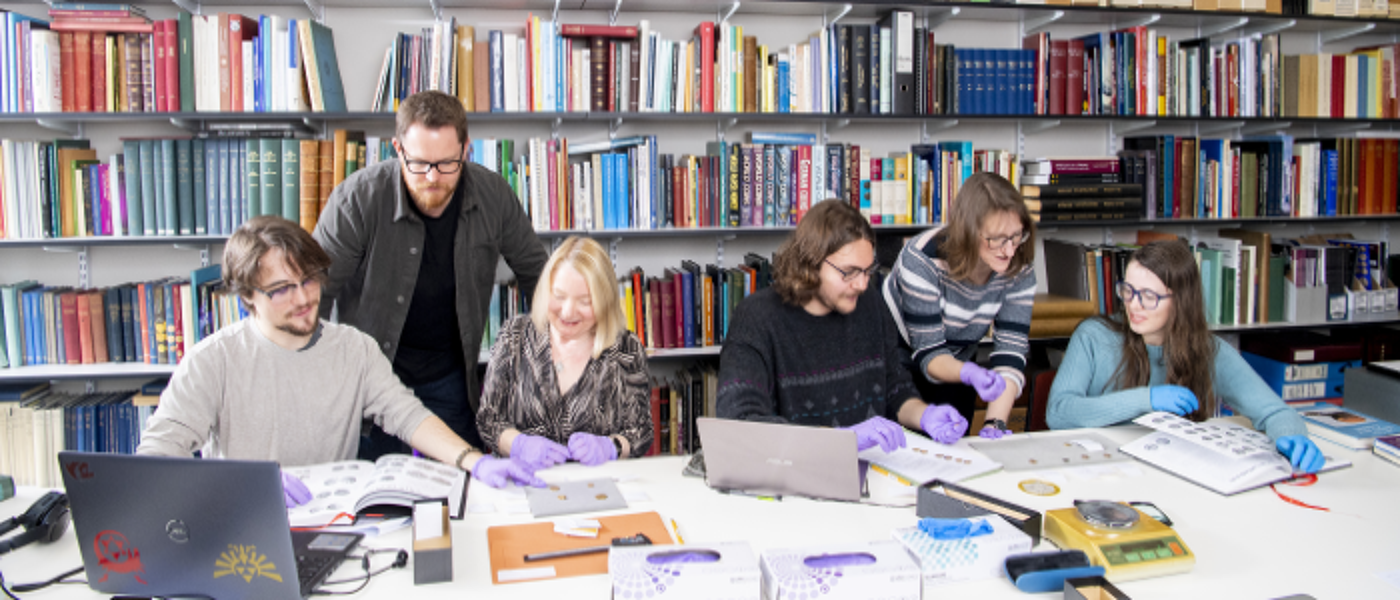Equal Pay & Equality Pay Gap Reporting
Our World Changers Together strategy sets out our ambitions to be a world class, world-changing University with our people at its heart. The strategy sets out our commitment to attract world-changing talent and develop, empower, and reward our people in line with our values and their contribution to our success. We seek the finest minds from around the world to join Glasgow’s growing international University community. Drawing strength from each other, and inspiration from the people, societies, and cities we serve, our diverse body of employees, students and alumni come together as one Glasgow community, driven by a unifying desire to change the world for the better.
These pages set out the University’s commitment to reducing the equality pay gaps that currently exist. It reflects the University’s position as a leading organisation with an impressive track record in this strategically significant agenda and our ambition to further enhance our employer brand in attracting and retaining the very best available talent.
Our pay and grading structures are underpinned by a systematic and analytical approach to job evaluation designed to measure the relative value of roles in a consistent, transparent, and fair way. This, coupled with the introduction of professorial zoning and banding at senior executive levels some years ago, has clearly supported the narrowing of gender pay gaps within grades across the University.
The work we undertake to address the underlying factors impacting upon the gender pay gap continues in earnest. Consistent with the University’s commitment towards becoming an anti-racist and inclusive institution, we regularly report and analyse equal pay and pay gap data relative to ethnicity and disability.
Various actions are in train to tackle these pay gaps, informed by our success in narrowing the gender pay gap, and are aligned with the key themes of our People and OD Strategy 2020-2025. These are: Living our Values; Maximising Organisational Capability and Employee Experience, which equally support the University’s World Changers Together plan.
Defining Equal Pay and Gender Pay Gap
The University has reported on both our Equal Pay Statement and the Gender[1] Pay Gap since 2013, in accordance with the legislative provisions of the Equality Act 2010[2]. In 2017, the University began reporting on both Equal Pay and Pay Gaps for ethnicity, and disability.
It is of note that ‘equal pay’ and ‘gender pay gap’ are distinct legal concepts which similarly apply to ethnicity and disability.
Equal Pay legislation prohibits any less favourable treatment between women and men in their terms and conditions of employment. The Equality Act 2010 gives both women and men the right to equal pay for equal work, with women and men being legally entitled to be paid at the same rate for like work, work rated as equivalent, and work of equal value.
Guidance published by the Equality and Human Rights Commission (EHRC) describes percentage differences that fall outwith 95-105% i.e. +/-5% as constituting a statistically significant difference in pay. Gaps of over 5% require to be investigated and acted upon while gaps that exceed 3% may also warrant further investigation where a pattern or a trend emerges, for example, where all or most of the differences are in favour of one sex.
The (Gender) Pay Gap is the average difference between the aggregate hourly earnings of men and women. Factors such as age, educational background, organisational size, the availability of part-time work and occupational segregation contribute to the existence and extent of the (gender) pay gap.
The census date for pay and demographic data informing these analyses is 31 August 2022[3], unless otherwise stated.
[1] ‘Gender’ here in fact refers to the protected characteristic of ‘Sex’. The language used throughout this paper and the University’s pay reporting reflects the language used in the Equality Act 2010 and associated equality duties.
[2] Equality Act 2010 (Specific Duties) (Scotland) Amendment Regulations 2016
[3] The University’s introduction of a pay uplift in November 2022 widened the average and median pay gaps. As part of the Equality Impact Assessment of the uplift, the University committed to reviewing the impact of that uplift mid-cycle during the pay gap reporting schedule. The backdated uplift payments are not incorporated in the data taken on the census date of 31 August 2022.
What is the difference between mean and median figures?
The median pay gap is the difference between the midpoints in the ranges of hourly earnings of men and women. It takes all salaries in the sample, lines them up in order from lowest to highest, and picks the middle salary. We believe this is a more representative measure of the pay gap at the University because it is not affected by outliers – a few individuals at the top or bottom of the range.
The mean gender pay gap is the difference between the average hourly earnings of men and women.
Tackling Equality Pay Gaps
The University is committed to equitable support and progression for colleagues across our workforce. Actions to begin to tackle and address our equality pay gaps reflect our strategic people themes aligned with our World Changers Together Strategy.
Additionally, specific actions are in place with regards to increasing the representation of women at senior professional and professorial level embedded in our People & OD Strategy implementation plan and Athena Swan action plans at University and School levels. These are focused upon continuing to deliver our values-led culture and related behavioural change both institutionally and within each of our Schools and Services towards the gender-inclusive UofG community to which we aspire. These action plans also increasingly incorporate actions to implement EDI campaigns, initiatives, and policies such as those enacted through the Understanding Racism, Transforming University Culture (URTUC) Action Plan and Public Sector Equality Duties (PSED) Equality Outcomes.
Living Our Values:
- Continue with ongoing process of 6-monthly campaigns to increase colleague disclosure rates across all protected characteristics, particularly ethnicity and disability, to support meaningful, data-led, analyses of equality pay gaps.
- Our new support portal and process for Disabled and Neurodiverse colleagues is contributing towards enhancing trust in our processes and further increase colleague declaration rates. This will provide additional context and understanding to pay gap analysis.
- Continue to embed our Values through the Code of Professional Conduct and Glasgow Professional Behavioural Framework to cultivate a values-led culture that promotes inclusive and equitable environment where everyone feels valued and supported to strive for excellence.
Maximising Organisational Capability:
- Review PDR Guidance for academic reviewers, enhancing inclusive advice on supporting reviewees’ understanding of promotion criteria and requirements in working towards their career development in good time.
- Develop succession plans for every unit with a particular emphasis on STEMM-based disciplines with active support for traditionally under-represented groups forming part of these plans.
- Achieving strategic KPI targets for Equality, Diversity and Inclusion will contribute to improving representation of women, UK BAME, and Disabled colleagues across our population, particularly at senior levels, through enhanced talent attraction and management strategies with a view to improving our equality pay gaps.
Employee Experience:
- Undertake further exploration of quantitative and qualitative people-related data through regular engagement surveys and related actions based on their outcomes to examine and explore any additional factors that may be driving the gender pay gap amongst Professional Services colleagues at Grade 10.
- In line with our URTUC Action Plan:
- Analyse data on our recruitment processes to map the candidate journey and identify barriers to conversion of applications to appointments for BAME candidates, putting in places actions to address the specific challenges that are identified.
- Review career progression and promotion for ethnic minority academic colleagues to identify any systemic barriers.
- Continued promotion and support of James McCune Smith PhD Scholarships for UK Black students to support the R&T ‘pipeline’.
- Address the EDI-related findings from the REF EIA, specifically the need to address those issues identified with respect to the career journey of our BAME researchers towards research independence.

Gender Pay Gap

Ethnicity Pay Gap

Disability Pay Gap


